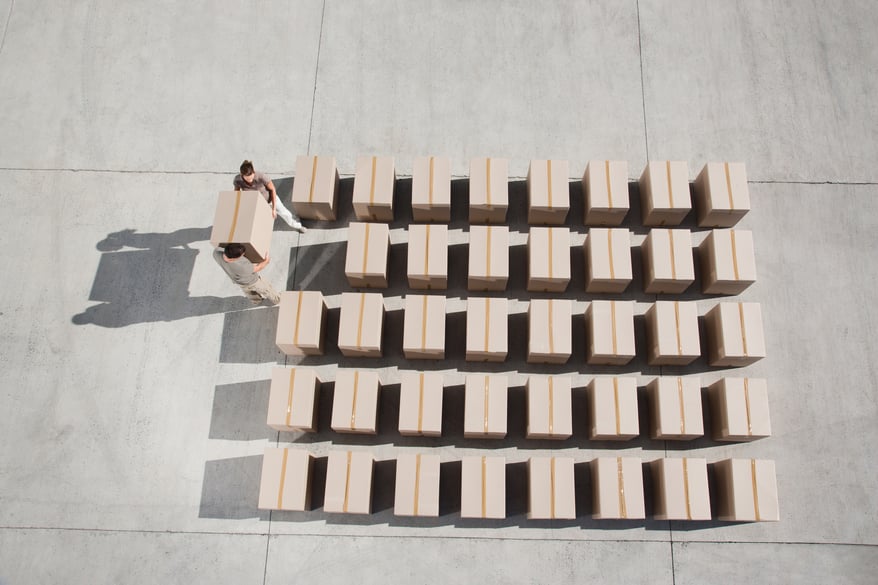Changes to the Harmonized System (HS) are coming and, with them, changes to the EU Customs Tariff. This article details the changes, but first, a little background...

What is the Harmonized System?
The International Convention on the Harmonized Commodity Description and Coding System (HS Convention) entered into force on 1 January 1988 with three objectives:
-
to facilitate international cross-border trade and the collection, comparison, and analysis of statistics by harmonising the description, classification, and coding of goods in international trade;
-
to reduce the expenses related to international trade; and
-
to facilitate the standardisation of trade documentation and the transmission of data.
Who uses the Harmonized System?
More than 200 countries currently use the Harmonized System as a basis for their national customs tariffs. The HS is also used as a basis for the collection of international trade statistics, trade negotiations and rules of origin, and the monitoring of controlled goods.
When will the changes take place?
The HS is revised every 5 years, and the HS 2022, which is the seventh edition of the Harmonized System Nomenclature, will enter into force on 1 January 2022. The new version of the Harmonized System Nomenclature is already available for free on WCO’s database platform: www.wcotradetools.org. Explanatory Notes and Classification Opinions are not yet available but will be published after their validation by the Committees in the last quarter of 2021. Once available, they will be readable online through subscription only.
What changes have been made in HS 2022?
The new HS 2022 edition introduces some major changes with a total of 351 sets of amendments covering a wide range of goods. HS 2022 recognises new product streams and addresses environmental and social issues of global concern. Here are some examples:
• Electrical and electronic waste (e-waste): HS 2022 includes specific provisions for its classification to assist countries in their work under the Basel Convention.
• Nicotine-based products and unmanned aerial vehicles (UAVs, also known as drones): New provisions shall simplify the classification of these products.
• Smartphones: They gain their own subheadings.
• Glass fibres and metal-forming machinery: Major reconfigurations have been undertaken.
• Multi-purpose intermediate assemblies: there will be more products classified in their own right, such as flat-panel display modules.
Goods specifically controlled under various Conventions have also been updated and many new subheadings have been created for dual-use goods. Changes have also been made to put a greater focus on health and safety.
EU Combined Nomenclature changes
The EU Combined Nomenclature (CN) is based on the WCO Harmonized System and therefore must include any HS amendments. So, from 1 January 2022, a new EU Customs Tariff will come into force. Annex I to Regulation (EEC) No 2658/87 will be replaced by a complete and up-to-date version of the EU CN, together with the autonomous and conventional rates of duty.
On 29 October, the EU Commission published the 2022 version of the Combined Nomenclature. Here are some key changes:
• The HS 2022 amendments in Chapter 24 addressing novel tobacco products are transposed in the CN with specific headings and subheadings to allow for their identification and classification.
• Amendments in order to implement the gradual reduction of duty rates for products covered by the agreement on IT products, in the form of the Declaration on the Expansion of Trade in Information Technology Products.
• Introduction of new subheadings, including:
o ‘not deterpenated rose oil’ in Chapter 33
o ‘fibre board and plywood’ in Chapter 44
o certain ‘steel tubes’ in Chapter 73
o aluminium composite panels’ in Chapter 76
• Amendments to the classification of some substances in the list of non-proprietary names of pharmaceutical substances in the Annexes.
• Additional TARIC codes in Annex 10 of the CN to create a relevant new supplementary unit ‘t. CO2’ in order to monitor the impact of the trade in fluorinated greenhouse gases on climate.
How to prepare for the 2022 changes
Before any review of the HS 2022 changes can be made, operators are encouraged to review the current tariff classifications of their products to ensure they are correct. This will help you accurately map your products to any changes.
The WCO has published 2017 to 2022 and 2022 to 2017 correlation tables that can be used to check if the current HS code will change and, if so, where the relevant goods will be classified.
C4T is currently aligning CAS with the HS 2022 changes so that goods will continue to be classified correctly once the changes take effect. Native CAS features such as validation of master data for all declarations and our soon-to-be released Tariff Measures module support ongoing changes to customs formalities, ensuring your goods pass through customs without delay.
Schedule a demo to find out more about how a subscription to CAS can future-proof your customs operations.